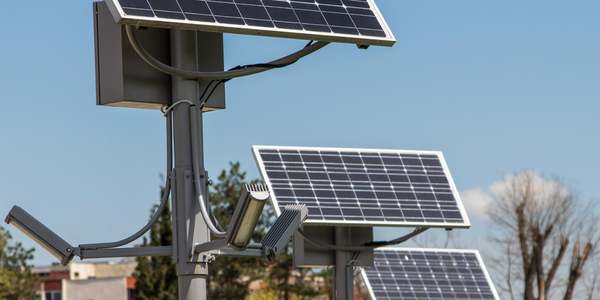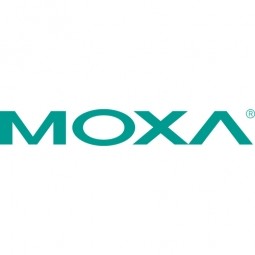
技术
- 自动化与控制 - 监督控制和数据采集 (SCADA)
- 功能应用 - 远程监控系统
- 网络与连接 - 以太网
适用行业
- 可再生能源
适用功能
- 商业运营
用例
- 远程控制
客户
未公开
挑战
随着对全球变暖的担忧不断加剧,绿色技术越来越受欢迎。风力涡轮机公司通过利用风的动能并将其转化为电能,为燃烧化石燃料提供了绝佳的替代方案。一个典型的风电场可能包括 80 多台风力涡轮机,因此管理和控制这些装置的高效可靠网络势在必行。每个风力涡轮机都包括一台发电机和各种串联组件,例如水冷却器、高压变压器、超声波风传感器、偏航齿轮、叶片轴承、变桨气缸和轮毂控制器。所有这些组件均由 PLC 控制并与地面主机通信。由于将这些设备完全集成到以太网中,我们的风力涡轮机行业的一个客户需要一个串行到以太网的解决方案,该解决方案可以可靠地运行多年而不会中断。
解决方案
Moxa 的 NPort® 5210 设备服务器可以将风力涡轮机内的工业串行设备转换为以太网设备。通过安装 NPort® 5210,站内运行 SCADA 系统的主机 PC 可以与 PLC 通信,从任何网络位置甚至 Internet 执行数据分析、系统控制和维护。 NPort® 5210 的小尺寸和简单的配置使其能够完美地安装在风力涡轮机内部。此外,以太网通过 Turbo Ring 冗余网络连接到远程控制站。产品解决方案: NPort 5210/NPort 5230/NPort 5232 系列 2 端口 RS-232/422/485 串行设备服务器
收集的数据
Device Diagnostic Status, Per-Unit Maintenance Costs, Wind Speed
运营影响

Case Study missing?
Start adding your own!
Register with your work email and create a new case study profile for your business.
相关案例.

Case Study
Remote Monitoring & Predictive Maintenance App for a Solar Energy System
The maintenance & tracking of various modules was an overhead for the customer due to the huge labor costs involved. Being an advanced solar solutions provider, they wanted to ensure early detection of issues and provide the best-in-class customer experience. Hence they wanted to automate the whole process.

Case Study
Vestas: Turning Climate into Capital with Big Data
Making wind a reliable source of energy depends greatly on the placement of the wind turbines used to produce electricity. Turbulence is a significant factor as it strains turbine components, making them more likely to fail. Vestas wanted to pinpoint the optimal location for wind turbines to maximize power generation and reduce energy costs.

Case Study
Siemens Wind Power
Wind provides clean, renewable energy. The core concept is simple: wind turbines spin blades to generate power. However, today's systems are anything but simple. Modern wind turbines have blades that sweep a 120 meter circle, cost more than 1 million dollars and generate multiple megawatts of power. Each turbine may include up to 1,000 sensors and actuators – integrating strain gages, bearing monitors and power conditioning technology. The turbine can control blade speed and power generation by altering the blade pitch and power extraction. Controlling the turbine is a sophisticated job requiring many cooperating processors closing high-speed loops and implementing intelligent monitoring and optimization algorithms. But the real challenge is integrating these turbines so that they work together. A wind farm may include hundreds of turbines. They are often installed in difficult-to-access locations at sea. The farm must implement a fundamentally and truly distributed control system. Like all power systems, the goal of the farm is to match generation to load. A farm with hundreds of turbines must optimize that load by balancing the loading and generation across a wide geography. Wind, of course, is dynamic. Almost every picture of a wind farm shows a calm sea and a setting sun. But things get challenging when a storm goes through the wind farm. In a storm, the control system must decide how to take energy out of gusts to generate constant power. It must intelligently balance load across many turbines. And a critical consideration is the loading and potential damage to a half-billion-dollar installed asset. This is no environment for a slow or undependable control system. Reliability and performance are crucial.

Case Study
Temperature monitoring for vaccine fridges
Dulas wanted a way to improve the reliability of the cold chain, facilitating maintenance and ensuring fewer vaccines are spoiled. Dulas wanted an M2M solution which would enable them to record and report the temperature inside vaccine refrigerators.

Case Study
IoT Powering A New Way to Light Streets with Bifacial Solar Panels
When James Meringer’s commercial contracting business experienced a rapid increase in solar projects, he also saw an opportunity to extend the benefits of solar by using the bifacial solar panels he’d become familiar with in new ways. Bifacial solar panels enable sunlight from both sides of the panel, making it a more efficient harvest of solar power. Seeing the panel’s power, James and his team set out to use the same technology for street lighting. Until now, solar street lights have served as utilitarian solutions that force designers to choose between form and function. The Mira Bella Energy team has changed that.

Case Study
Controlling and Monitoring Microgrids
Microgrid topologies offer several advantages over large traditional grids including increased resiliency and easier integration of distributed renewables. However, some challenges such as maintaining scalability and interoperability between diffferent vendors and connectivity protocol standards are challenges that have to be overcome in order to reap the benefits of such a system.



